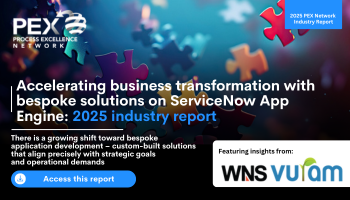How Formula E operates as a data-driven business
Formula E uses business intelligence and data analytics to enhance decision making
Add bookmark
Modern organizations have enormous amounts of valuable intelligence and data circulating within the enterprise. Business intelligence and data analytics offer a solution for understanding, assessing and improving even the most complex and dispersed business processes.
Formula E, a single-seater motorsport championship for electric cars that debuted in 2014, operates as a data-driven business, Matt Roberts, VP of business intelligence at Formula E, tells PEX Network. “For the past three years, all decisions have been informed by the most robust data available whereas previously Formula E had a much more ‘finger in the air’ approach to making decisions.”
Business intelligence and data analytics offer a number of benefits, including understanding more about the behavior of existing customers as well as potential customers of the future, Roberts adds. “It helps businesses to provide robust reporting about how well it is performing and can also help improve marketing and other key areas of the business.
Join the PEX Network community

Don't miss any news, updates or insider tips from PEX Network by getting them delivered to your inbox. Sign up to our newsletter and join our community of experts.
Learn MoreBusiness intelligence and data analytics at Formula E
Formula E uses business intelligence and analytics in several areas including:
- Spectator and sponsor analysis: Understanding movement of fans around race circuits via Wi-Fi analytics as well as using survey data to understand satisfaction and enjoyment of events. Also using data to prove effectiveness and media value for sponsors.
- Media and fan reporting: Understanding how well the company is performing across a range of metrics such as TV audiences, digital performance, fan and brand metrics. Also using data to gauge how many global fans the sport has compared to other sports leagues/events, deducing potential fans and increasing engagement.
- Sporting decision making: Using data to help make certain sporting decisions (e.g. changing qualifying or introducing charging pit stops).
READ: DataOps and the evolution of data analytics
Data proves and justifies decisions
“All key decisions/changes now have the input of data to prove and justify them,” and the benefits are significant, Roberts adds. For example, Formula E has used data to understand pinch points in its TV broadcast where fans switch over, using this to inform the broadcast team about ways to maintain viewer engagement (in particular, recommending when they use on board driver cameras, replays and different camera angles).
“Business intelligence/data were responsible for designing the Formula E growth plan and the key performance indicators (KPIs) for each season between now and 2030. This growth plan was shared with all teams and partners, as well as prospective investors,” Roberts says. Data is also used to determine the optimal locations for trackside advertising for sponsors, improve events/races from a fan perspective and inform marketing briefs for new campaigns.
Stakeholder buy-in and data accuracy key to success
Buy-in from key stakeholders and strong relationships that reveal their objectives/needs are key to business intelligence and data analytics success, Roberts says. “You can then ensure that the insight you are producing has value and is being used to drive key decisions in the business.” It’s also important to understand how stakeholders want the data/ insight to be shared, he adds. “You can’t assume everyone wants a 30-slide PowerPoint presentation or a business intelligence dashboard. By getting to know your stakeholders, you can deliver in the way which suits them and will be most effective at driving decisions.”
Securing buy-in and stakeholder support is a significant challenge though, Roberts adds. “Many people are not particularly data literate (particularly in sports) so it is key to ensure that you are able to educate and present the results clearly and simply to help them understand the insight which is most important to them. Simplifying data and educating stakeholders at Formula E has made our team successful as people are now much clearer about the insight/message which is being shared by the data.”
Data accuracy is also very important, Roberts adds. “Ensure that you have proven vendors/agencies and data tools to ensure you deliver the most accurate and effective response to business needs. The most important thing that is that the data/insight gleaned is actionable and can help drive decisions within a business, otherwise it is much less useful.”
Download Harnessing business intelligence and data analytics: 2024 industry report to learn how business intelligence and data analytics drive organizations to enhanced processes, operations and efficiency
Accelerating business transformation with bespoke solutions on ServiceNow App Engine

Today, off-the-shelf software solutions offer diverse features that enable vast opportunities to implement and maintain business transformation. However, in some circumstances, capabilities lack the flexibility and specificity required to address the unique challenges and workflows of individual organizations. As a result, there is a growing shift toward bespoke application development – custom-built solutions that align precisely with strategic goals and operational demands.
Download this report to explore how enterprises can harness the power of custom applications to drive meaningful transformation. With the growing adoption of low-code platforms like ServiceNow App Engine, organizations are building custom applications faster and with greater control. By empowering both IT professionals and citizen developers to build tailored solutions, organizations can significantly reduce time to value while maintaining control over quality and compliance.
Download Now









